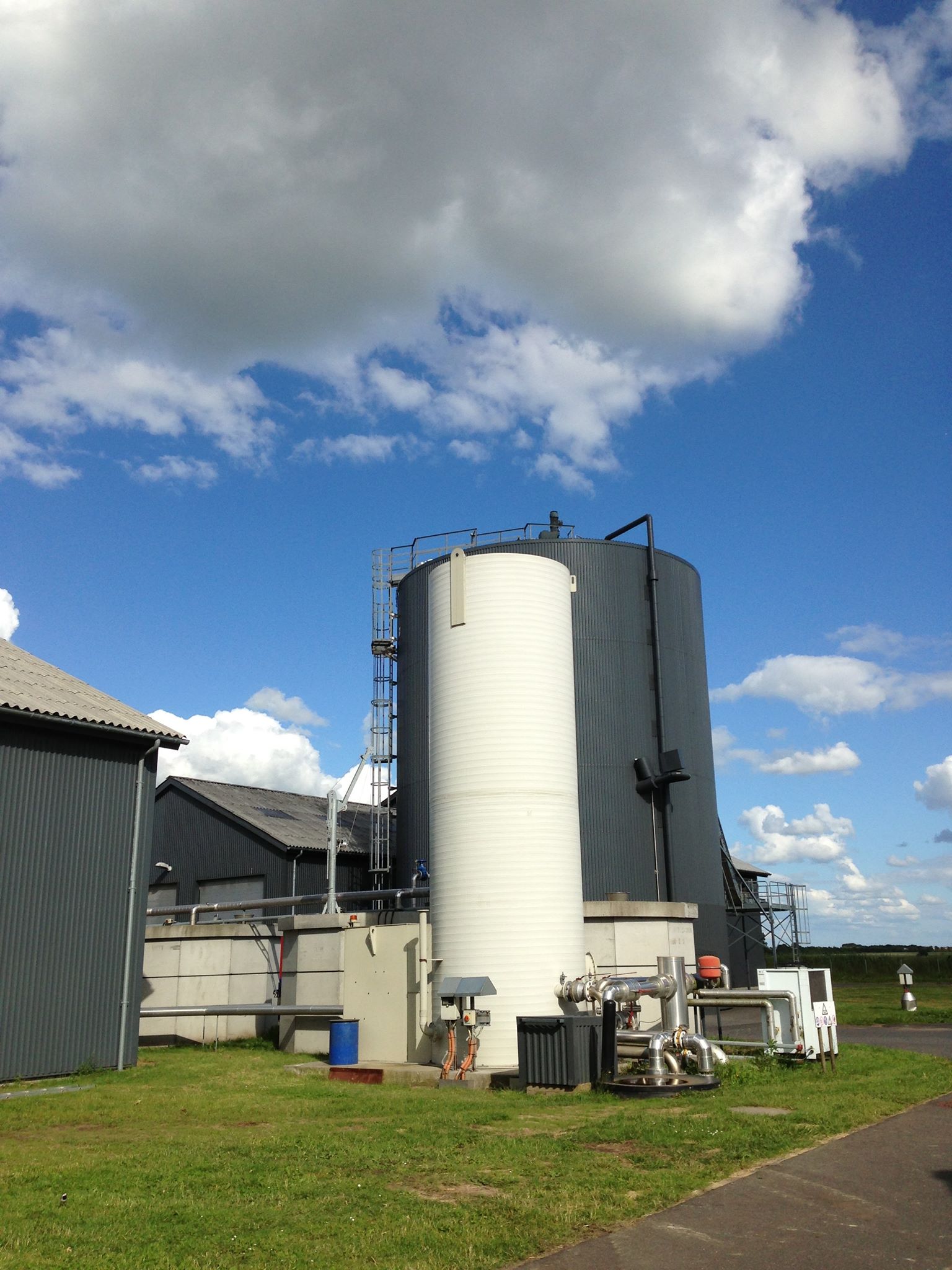Is sulfur produced from biogas cleaning available to plants after storage in manure?
Efficiently recovered, sulfur (S) from the (bio)-gas desulfurization process may be reused as on-farm S fertilizer. Despite some reduction of sulfate and elemental S to sulfide during a storage in untreated and digested manure, the filter products were a valuable source of plant available S.

Sulfur deficiency in crop production has become a recurring problem over the years in Denmark and the rest of the world. The enforcement of clean-air standards to reduce pollution from industry has significantly reduce the atmospheric S deposition, among other reasons. For example, in Denmark the atmospheric S deposition has dropped from 20 to 2 kg S ha-1 y-1 between 1970 and 2016. Moreover, S mineralized from the soil organic matter is often not sufficient to fulfill the crop S requirements. Therefore, S fertilizers in the form of sulfate and/or elemental S are commonly added to balance the plant needs.
Within the scope of sustainability and bio-based economy, there is a growing focus on the recycling of nutrients in farming systems. Anaerobic digestion via the application of digestate has proved to significantly increase the fertilizer value of organic materials especially for nitrogen and phosphorus but not S. Indeed, S is partly reduced to hydrogen sulfide during the process of anaerobic digestion and leaves the system together with the biogas. Nevertheless, hydrogen sulfide is afterwards removed from the biogas before conversion to heat and power by a gas cleaning process in a filter. The S products from the filter may be interesting for plant fertilization since they contain both sulfate and elemental S.
Fertilization needs synchronization with plant growth. The S produced from the biogas desulfurization process, however, is continuously generated and stored year-round at low cost in the existing storage facilities. Sulfur turnover is expected to take place during storage since manure is a reductive environment suitable for microbial activity.
As part of the NutHY project, a laboratory study was conducted on the recovery of S in the filter products from the biogas desulfurization process, its turnover during storage in untreated or digested manure, and its subsequent plant availability.
Three different S filter products from (1) a biological desulfurization process (BioF), (2) a chemical absorption process with straw ash (AshF), and (3) a combination of chemical absorption and biological regeneration (Fertipaq) were examined in the study. BioF and AshF contained high proportion of sulfate, while elemental S was the main component of Fertipaq.
Less reduction of sulfate in digested manure than in untreated manure
The reduction of sulfate in untreated manure started after one month of storage and significantly increased after the second month. After 4 months more than 50 % and after 6 months more than 70 % of the initial sulfate contents were converted to sulfide (Table 1). In digested manure, the reduction of sulfate started later and at a lower rate than in untreated manure. The sulfate concentration did not change during the first 2 months of storage. After 6 months, about 65 % of the initial sulfate level remained. The addition of a filter material with high pH buffer property (AshF) resulted in almost complete conservation of sulfate throughout the 6 months of storage in digested manure (pH of the mixture ? 8.2).
In contrast, elemental S was immediately and simultaneously reduced and oxidized during the first 2 – 4 months of storage in any manure types. Afterwards, sulfate was reduced in untreated manure and stabilized in digested manure.
Table 1 Proportion of sulfate from S filter materials left after 2 and 6 months of storage in untreated and digested manure at 10?C.
S filter materials | % Sulfate left after storage† | ||
2 months | 6 months | ||
Untreated manure | No addition | 49 | 13 |
Biological and ash filters (BioF and AshF) | 89 | 31 | |
Fertipaq | 1097 | 1005 | |
Digested manure | No addition | 36 | 36 |
BioF (pH < 8.2) | 98 | 65 | |
AshF (pH ? 8.2) | 100 | 95 | |
Fertipaq | 3323 | 4754 | |
† 100 % represent the sulfate level before the storage started
Filter products added to manure increase considerably the S uptake by the crops
In the study, the produced sulfide remained dissolved in the liquid so that the total S loss by volatilization was limited (about 16 % in untreated manure and 4 % in digested manure). The observation was validated through our pot experiment with oil-seed rape. The results showed that the S fertilizer value of manure increased from 15-19 % (of total S applied) without addition of S to 56-90 % with filter material added, proving that S in filter materials was plant available.
In conclusion, we found a minimum risk of reduction of S to sulfide when S filter products were stored in digested manure especially when the pH was ? 8.2. For pH 5.5 to 8.2 in any manure types, the storage time should be kept as short as possible although only little reduction took place within the first 4-6 weeks. Elemental S is highly concentrated and should preferably be stored alone. Under conditions with limited S volatilization during storage and application, filter materials are effective on-farm S fertilizer.
More details can be found in:
Fontaine D, Eriksen J, Sørensen P (2021) Sulfur from biogas desulfurization?: Fate of S during storage in manure and after application to plants. Sci Total Environ 754:142180. doi: 10.1016/j.scitotenv.2020.142180